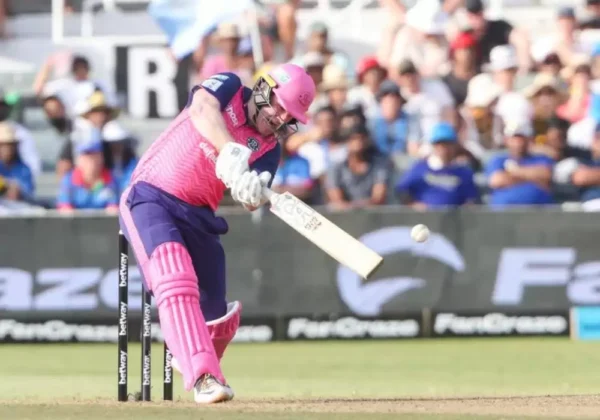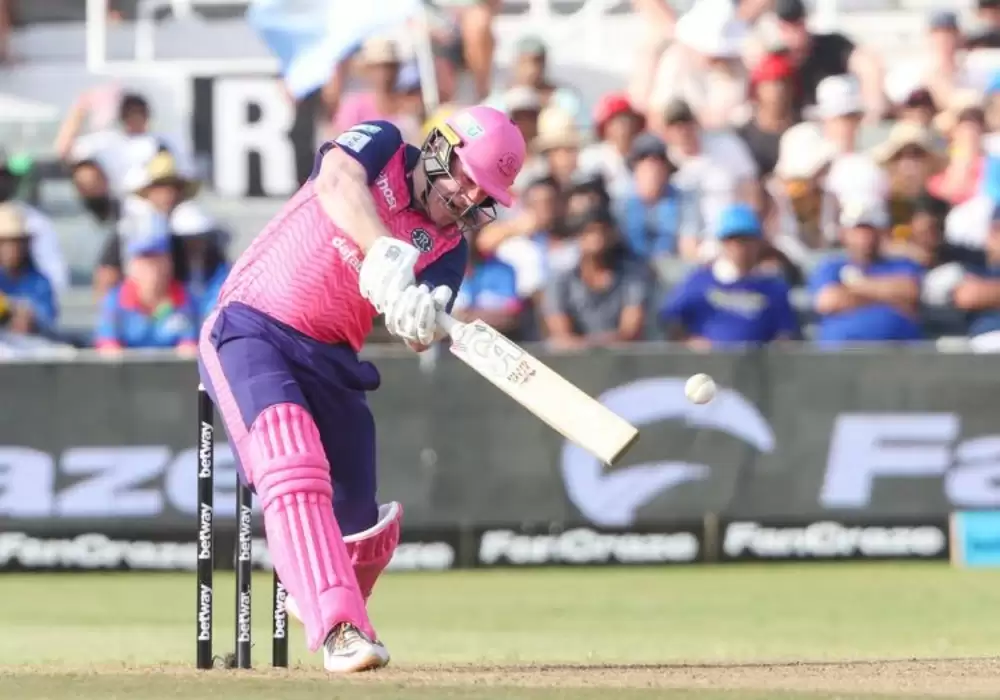
The former England skipper talked about his philosophy to the T20 game and recalled how it transformed three lions' fortunes after 2015 World Cup.

Eoin Morgan talked about his T20 philosophy for the modern-day batters, stating that the art of defending a cricket ball is a “wasted” thing. The former England captain, who pioneered three lions’ ultra-aggressive ways with the bat, which transformed their fortunes post the 2015 World Cup, says “practising a defensive shot” is a ball wasted in his view.
Morgan said since the essence of batting is to go out and score runs, it makes little sense for players of today to practise defending the cricket ball, especially in preparations for limited-overs cricket. This, in contrast to the view that to hone skills and range required to nail it even in T20, a player must have strong defensive capabilities as seen with the very best T20 players of the world.
“I shout at people for practising a defensive shot. It’s a wasted ball,” the 2019 World Cup-winning leader was quoted as saying by ESPNcricinfo at the sidelines of a net session for the Paarl Royals, whom he is representing at the maiden SA20 league in South Africa.
Eoin Morgan said batting advancements have reached a point where not only do players can look to score runs all the time but also practise accordingly on the outside. Having played the game over the years and seen it from close quarters, the ex three lions captain reckons it’s now part of the mentality of players to avoid blocking the ball even at practice.
“When you sit back and watch people bat, the very, very best always look to score first, and then, if it’s a good ball and you can’t score off it, you play a defensive shot. It takes a lot of drilling over the years but I don’t think it [the block] is at the forefront of everybody’s thinking now, whereas previously it was,” Eoin Morgan said, recalling the aftermath of England’s disastrous 2015 group-stage exit in Australia and how things changed over four years for the defending world champions.
Morgan had called the defeat a “humiliation” and pointed out one major difference between his team and the rest of the oppositions, who were better prepped up with their mentality to dominate what were now heavy-scoring ODI regulations. With the rules and the powerplay restrictions forcing teams to place fewer boundary riders, the then England skipper’s clear suggestion was to identify players who can consistently hammer the ball away without letting any cheap dismissal bog them down.
“The best teams in the world were scoring upwards of 350 in every game they played and taking on extra risks with the rule of the extra man having to be up in the 30-yard circle the whole time. That was something we were falling behind in,” Morgan said.
“To rectify that gap, part of the change was to recruit players, who, when they made mistakes or were put under pressure, their default was to be aggressive and really put the opposition under pressure.”
Also Read – R Ashwin voices support to discarded Shikhar Dhawan in India’s ODI World Cup plans
Morgan said the idea wasn’t entirely about putting strike rates and boundary count above traditional metric to judge players but to expand the range of options one had to score off a particular delivery. Something that enabled wings to the likes of Alex Hales, Jason Roy, Jonny Bairstow, Jos Buttler and Morgan himself, aggressors who combined seamlessly with the anchoring abilities of Joe Root, Ben Stokes in a line-up that batted deep to encourage consistent hitting.
“It was about putting each bowler under pressure if you were given the opportunity. If you look for opportunities, they appear more often than if you weren’t looking for them. So trying to create those opportunities by imposing yourself on the game was part of it,” he added.